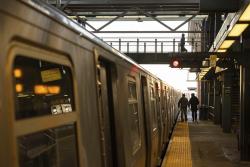Last night, the Salzburg Festival staged Maria Stuarda, Donizetti’s opera from 1835. On the stage were two leading American singers, at the height of their powers. It was a very good night of singing, and playing.
Maria Stuarda (think “Mary Stuart”) is one of Donizetti’s three operas about Tudor queens. The others are Anna Bolena (“Anne Boleyn”) and Roberto Devereux. Maria Stuarda gives you two queens for the price of one: the other is Elizabeth, or Elisabetta.
Elizabeth is the villainess of the piece—the “bad guy” in Donizetti’s opera. Mary is both victim and heroine. As if to accent this dichotomy, Salzburg’s production has Elizabeth garbed in black, Mary in white.
Obviously, the singers portraying the queens are crucial to a performance of Maria Stuarda. But no one is more crucial than the conductor. In the wrong hands, this opera, like other bel canto operas, can be flaccid, dull, incomprehensible. The opera does not conduct itself; it needs someone to lift the notes off the page and make them vivid.
This, our conductor did. He was Antonello Manacorda, from Turin. He once served as a concertmaster under Claudio Abbado. The orchestra in the pit was the Vienna Philharmonic, and elsewhere was the orchestra’s associated chorus. One of the fine “singers” on the evening was the principal clarinet.
In the title role was Lisette Oropesa, the soprano from Baton Rouge. Opposite her as Elisabetta was Kate Lindsey, the mezzo-soprano from Richmond. They have a lot in common. Each is smart, poised, and well prepared.
The performance took place in the Great Festival Hall, and I was worried that the place would be too big for Lindsey, in particular. It was not. She could always be heard, and she did not force.
Act II belongs, essentially, to Maria Stuarda. The opera becomes practically a one-woman show. Oropesa was compelling both vocally and theatrically. She has a number of colors in her voice, including dark ones. As she sang, it occurred to me: “There is a bit of glowing Callas obsidian in that voice.”
Queens need courtiers, and this show has a handful, including a tenor—who portrays Leicester (i.e., Robert Dudley, the Earl of Leicester). Ours was Bekhzod Davronov, from Uzbekistan. He owns a sweet, youthful voice, which he deploys nimbly.
An American baritone, Thomas Lehman, was Cecil: singing richly, with ample volume. A Russian bass, Aleksei Kulagin, made a robust Talbot.
The production is the work of Ulrich Rasche, a stage director and designer from Germany. We are familiar with lazy Susans—revolving discs—in opera productions. This one has two of them, and they are on a tilt. They are also treadmills. The characters walk on them, almost constantly. They almost never stop moving, in stylized steps.
In the opera, Elisabetta speaks of a “wheel of fortune.” Well, we have two of them in this production.
At intermission, some patrons said, “Those singers are certainly getting their steps in!”
I thought of Robert Wilson, the director who died last week. In 1998, he staged Wagner’s Lohengrin at the Metropolitan Opera in Kabuki style—with slow, stylized movements.
In Ulrich Rasche’s Maria Stuarda, there is occasionally some video, above the wheels. That video is sexy, vague, and creepy (at least to me). The wheels, I might note, make a fair amount of noise: creaks and groans. At the end of the opera, Maria is accompanied to the scaffold by men in what appear to be white diapers.
Obviously, Mr. Rasche knows a great deal about the theater, more than most of us could ever hope to. But how this opera serves Donizetti’s Tudor drama, I am at a loss to say.
When the curtain fell, and the singers came out to take their bows, Kate Lindsey did some of those slow, stylized steps. I loved that. After Lisette Oropesa bowed, she and Kate hugged each other, hard.















